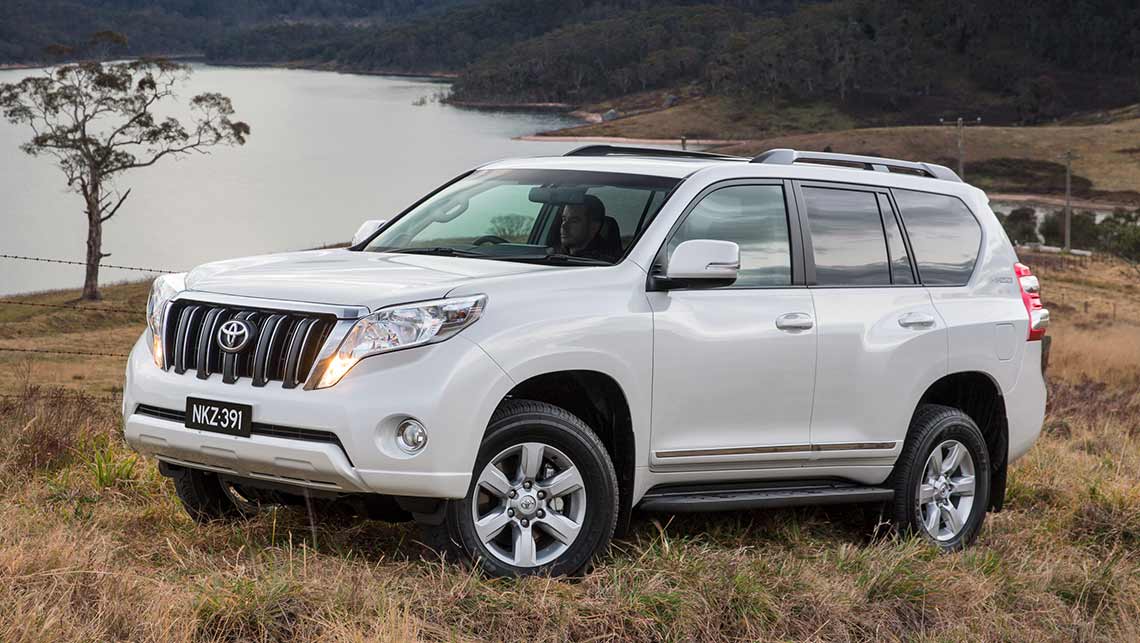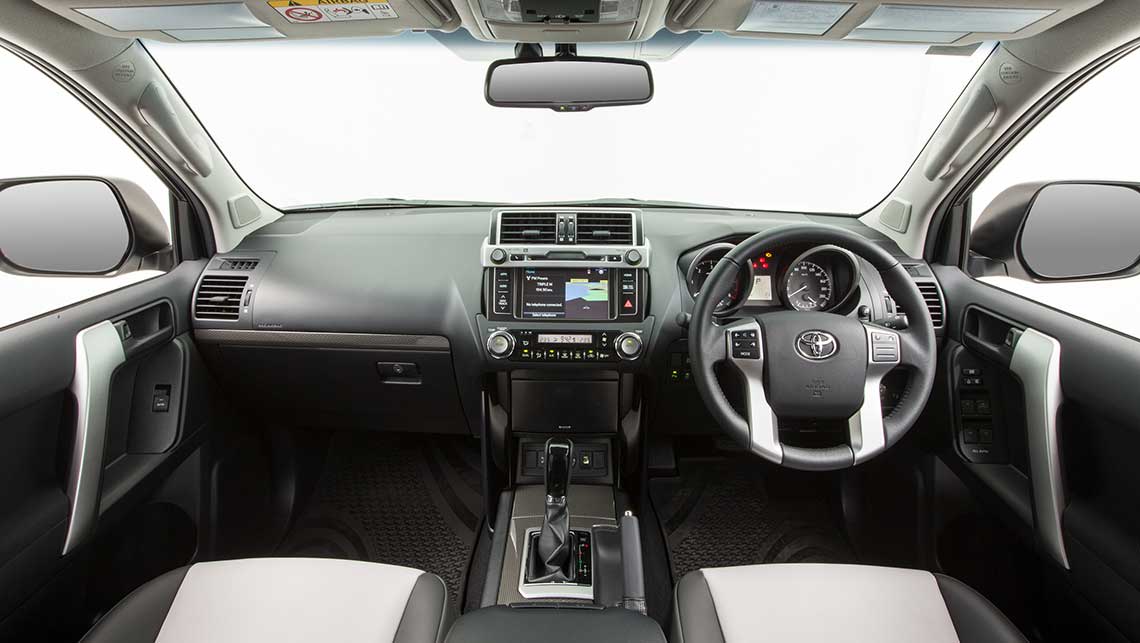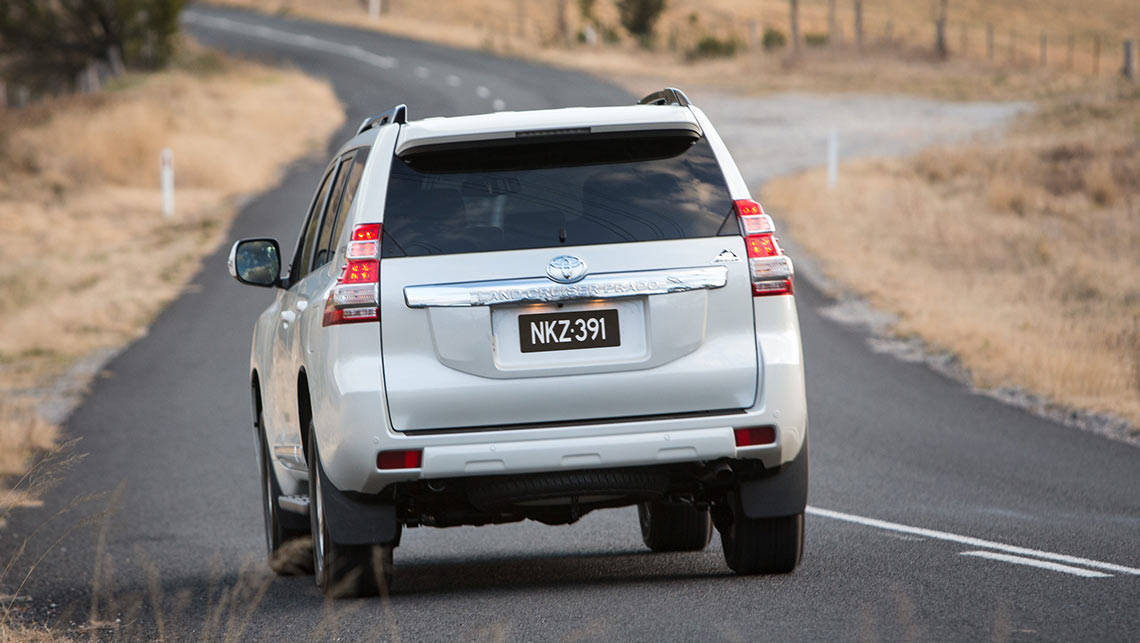Chop the spare wheel off the back of an SUV and you gain more than parking space. Toyota's special-edition Prado Altitude moves the spare from the rear swing-out door to beneath the cargo floor, lightening the door to make it easier to open and creating a lift-up glass hatch for quick boot access.
Removing the spare wheel also extends the rear door's opening arc, further improving accessibility. For the suburbs, it's a winner. For those in the country, the only downfall is the demise of the 63-litre secondary fuel tank which gets turfed to make way for the now horizontally mounted, underfloor spare wheel.
Compared with the regular Prado, drivers won't know much difference though there's a bit more rearward vision and a few more centimetres available for tight parking or to fit into small garages.
Explore the 2014 Toyota Land Cruiser Prado range
The Manx-tailed Prado is new to Australia but has been available in other markets. It arrives in the special edition Altitude, a model that makes a regular appearance in Toyota showrooms and attracts canny buyers wanting extra features without extra cost.
VALUE
The Altitude is based on the seven-seat GXL diesel automatic but aims straight at the family with additional features including a rear Blu-ray DVD player with wireless headphones, bound to be a winner with the children.
The separate rear airconditioning, satellite navigation, 14-speaker audio with digital radio and electric sunroof are more for convenience but add to the value-rich packaging. Part of the Altitude's kit list is two-tone leather upholstery which may be confronting to some but at least gives some visual relief from the all-black issue of most wagons.
Parents of younger travellers will note that leather cleans quicker and easier than cloth upholstery. Toyota claims there's $10,000 worth of goodies in the Altitude but the special edition model adds only $4800 to the GXL's price to give a sticker price of $68,520.
SAFETY
The special edition maintains the GXL model's safety list, with a five-star crash rating, seven airbags, hill descent and ascent (effectively a low-speed cruise control), rear camera and park sensors, and a full-size alloy spare wheel.
DRIVING
Anyone concerned that the lack of the sub-tank will make a substantial hit to the touring range are correct — but there's still an average 1025km in the tank compared with the GXL's 1765km.
The smaller fuel tank aside, the diesel Prado Altitude drives exactly like the standard model — a bit bittersweet. The best thing about driving a Prado is the sense that it's not going to break down. It feels structurally solid, sits high off the roads and away from perceived danger and that diesel engine tirelessly chugs like a lazy locomotive.
All the blancmange edges that make the Prado feel vague on the road disappear in the rough.
On the road it's lethargic in engine response and ponderously accepts handling and steering commands. It also wallows at the front end, a motion capable of inducing seasickness, as the suspension appears to be softened to improve ride comfort.
Worse, its road manners are being savaged by more nimble rivals with almost as much voracity as their improving value rating. For example, Jeep's pricing is comparatively cut throat and its eight-speed automatic is smoother than the Prado's five-cog unit while its similarly-sized engine is more powerful and more fuel efficient.
But for buyers who like the tough edge, actually use their vehicles in the dirt and appreciate the relatively low maintenance costs associated with Toyota, the Prado has much more appeal. All the blancmange edges that make the Prado feel vague on the road disappear in the rough. The steering's softness becomes the perfect insulator to rough roads — especially corrugations — and the slow engine response masks the on- off jerkiness of unintentional accelerator pedal movements.
The suspension's suppleness sufficiently absorbs the bumps and shields the passengers from the effects of abrupt and harsh trail obstacles. Sand tracks are best forded with lower tyre pressure but even flicking the dash lever to low-range and engaging the centre differential lock, is hardly difficult work for the Prado.













